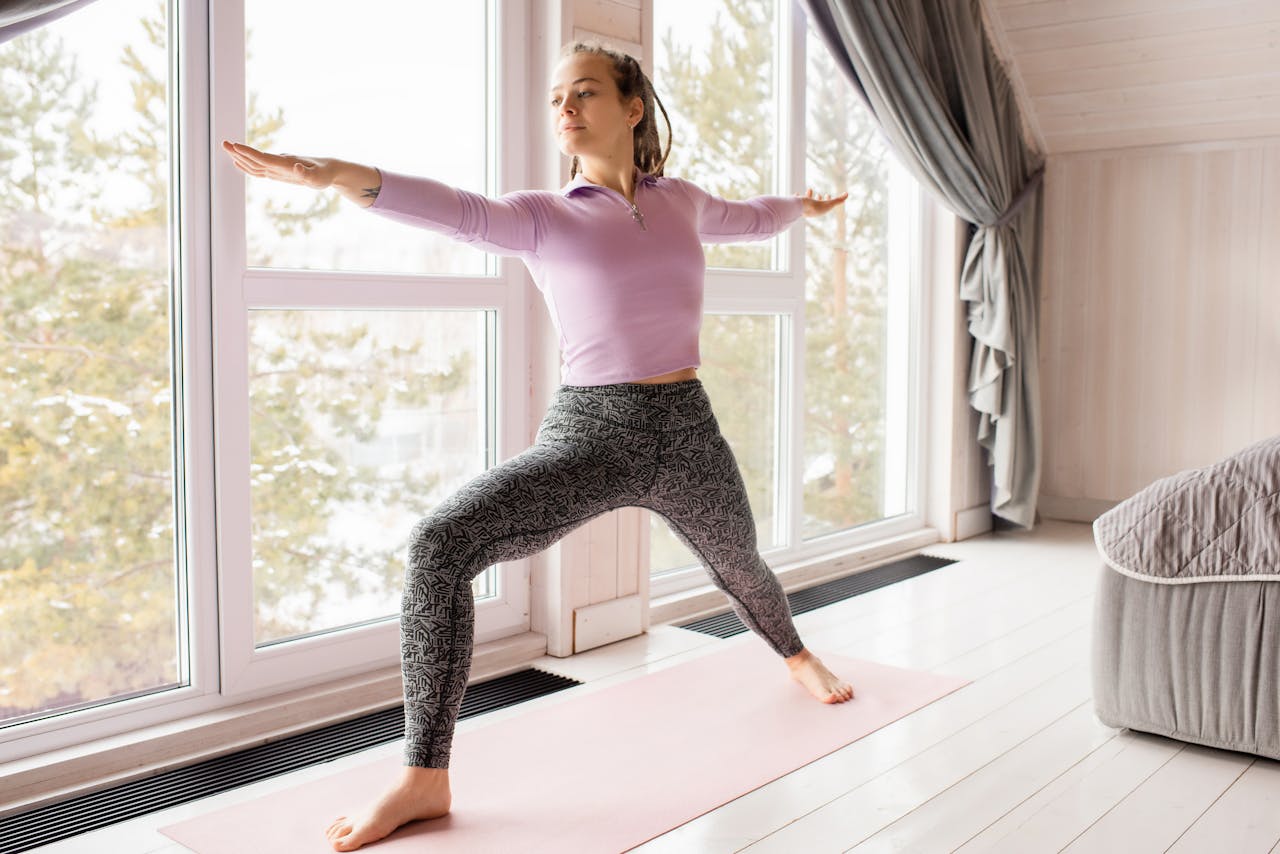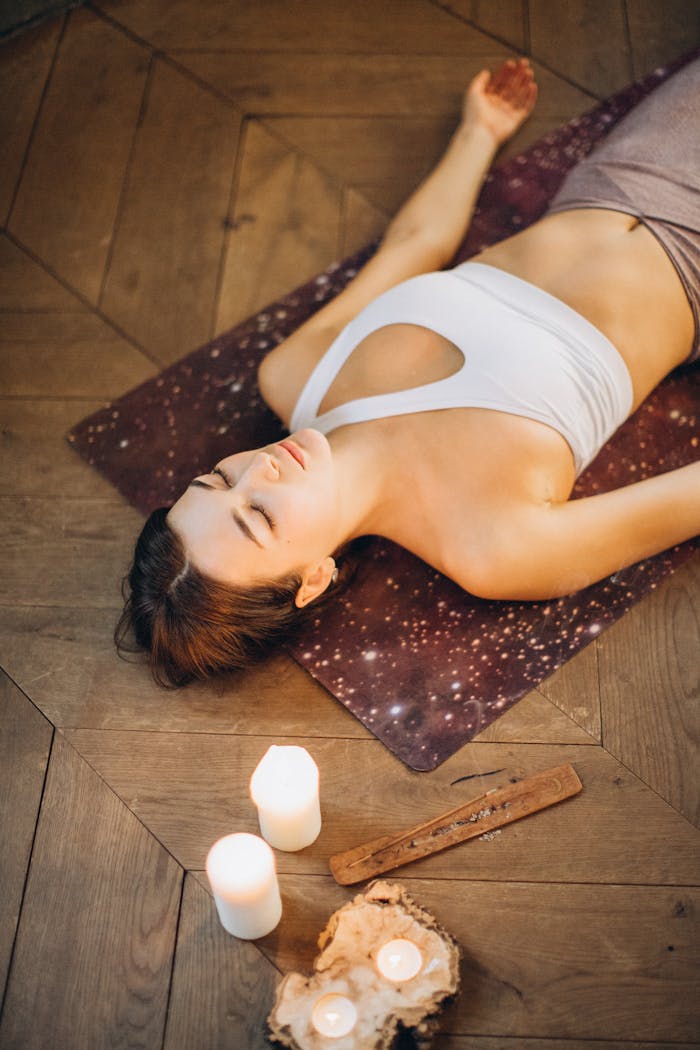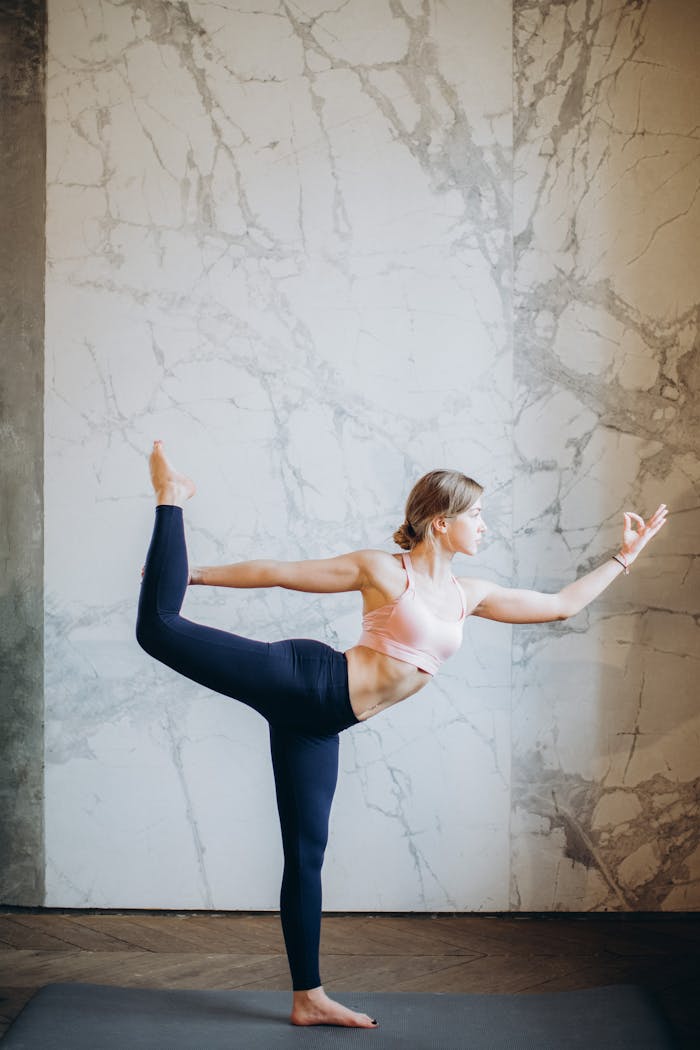Restorative yoga isn’t about pushing or striving—it’s about gently supporting your body, tuning into your breath, and allowing deep renewal to take place.
1. What Is Restorative Yoga?
- Supported Poses: Uses bolsters, blankets, and blocks to cradle the body
- Extended Holds: Poses are held anywhere from 5 to 20 minutes
- Minimal Effort: Focus on surrender rather than muscular engagement
This practice invites you to slow down, release tension, and let your nervous system shift into a parasympathetic (rest‑and‑digest) state.
2. Key Benefits
- Deep Relaxation
- Lowers heart rate
- Reduces cortisol levels
- Improved Flexibility
- Gently opens tight hips, shoulders, and lower back
- Mental Clarity
- Creates space in the mind for creative insight
- Helps release chronic stress and anxiety
- Enhanced Resilience
- Teaches that rest is productive, not indulgent
- Builds capacity to handle life’s pressures with calm
3. Three Beginner‑Friendly Restorative Poses
- Supported Child’s Pose (Balasana)
- Props: Bolster or two folded blankets under torso
- How to: Kneel, sit back on heels, fold forward, rest forehead on bolster
- Hold: 5–10 minutes, breathing deeply into the back body
- Reclined Twist (Supta Matsyendrasana Variation)
- Props: Block between bent knees, blanket under head
- How to: Lie on back, hug right knee toward chest, guide it across to left side, stack knees and rest arms out in “T”
- Hold: 8–12 minutes per side, allow your spine to lengthen
- Legs‑Up‑the‑Wall (Viparita Karani)
- Props: One bolster or folded blanket under hips
- How to: Sit side‑on to wall, swing legs up as you lie back on prop, arms rest at sides or overhead
- Hold: 10–20 minutes, focus on softening the breath
4. Setting the Scene for Rest
- Lighting: Dim the room or use soft lamps
- Sound: Play gentle music, nature sounds, or a guided recording
- Comfort: Wrap in a cozy blanket; eye pillow optional
- Timing: Aim for 10–20 minutes in the evening or any time you need a reset
5. Integrating Restorative Yoga into Your Routine
- Weekly Ritual: Schedule a “Restorative Tuesday” or “Slow‑Down Sunday.”
- Micro‑Breaks: Even 5 minutes in Supported Child’s Pose can offer a mini‑reset at your desk.
- Combine Practices: Follow a vigorous Vinyasa class with a 10‑minute restorative cool‑down.
Final Thought
In yoga, doing less can often lead to gaining so much more. By embracing the pause, you honor your body’s need for rest and unlock the true power of surrender. Roll out your mat, gather your props, and discover how profound relaxation can transform your life—one breath at a time.



